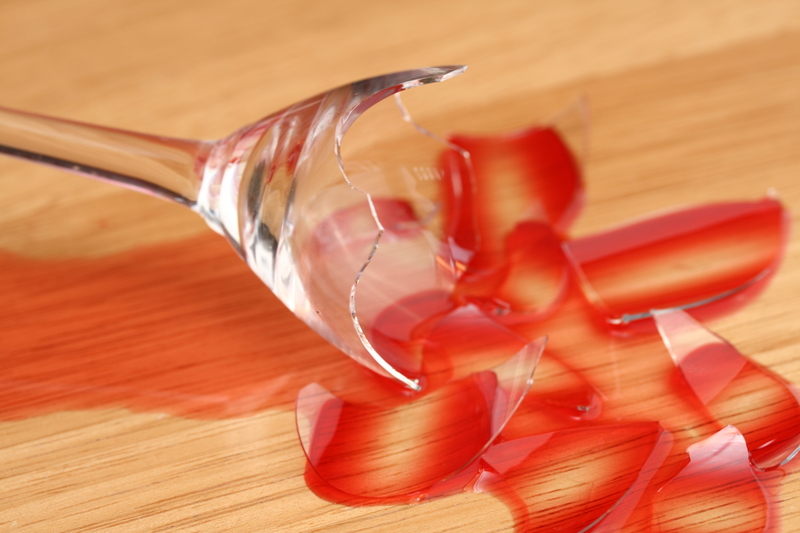Freshen Up: Tackling Damp Smells Effectively
Posted on 15/09/2025
Freshen Up: Tackling Damp Smells Effectively
Damp smells -- also known as musty odors -- are an all-too-common nuisance in homes, basements, offices, and even cars. They not only impact comfort but can also indicate underlying moisture issues that, if ignored, may harm your property and well-being. In this comprehensive guide, we'll explore how to tackle damp smells effectively, restore freshness, and create a healthier environment for you and your family.

Understanding Damp Odors
Damp or musty smells emerge when excess moisture allows mold, mildew, or bacteria to thrive. This unpleasant odor is often the first warning sign that spaces need attention. If you notice a persistent humidity smell or musty odor in your home, acting fast is crucial to prevent long-term damage or health issues.
Common Sources of Damp Smells
- Leaking pipes or appliances
- Poor ventilation in bathrooms or kitchens
- Basements, attics, or crawl spaces prone to water ingress
- Damp clothes left in washers or laundry baskets
- Carpets and upholstery exposed to spills
- Condensation on windows, walls, or ceilings
- High humidity environments
Identifying the source of damp odors is the first step toward tackling the problem and freshening up your space.
Pinpointing the Problem: Where Is That Smell Coming From?
Detecting the origin of a damp smell can be tricky, but it's essential for effective eradication. Here are some strategies to help you find the culprit:
Inspect High-Risk Areas
- Basement & Attics: These areas are frequently damp due to poor airflow and potential water seepage.
- Bathrooms: Check for mold behind tiles, under sinks, and around pipes.
- Kitchens: Leaky faucets, hidden corners, or under appliances can harbor moisture.
- Laundry Rooms: Ensure wet clothes aren't left sitting and dryers are venting properly.
Look for Visible Signs
- Mold patches or spots on walls, ceilings, or floors
- Peeling paint or wallpaper
- Discolored water stains
- Warped wood or swollen plasterboard
- Condensation droplets on windows or pipes
Remember, finding the source allows you to apply the right damp smell solutions and freshen up effectively.
Why It's Important to Eliminate Damp Odors Promptly
Ignoring musty smells is not just unpleasant -- it can lead to health issues and costly repairs. Here's why you should act quickly:
- Health Risks: Exposure to mold spores and bacteria can trigger allergies, respiratory difficulties, and asthma, especially in children and the elderly.
- Structural Damage: Prolonged dampness can weaken wooden beams, destroy insulation, and cause plaster to crumble.
- Reduced Property Value: Persistent odors and visible mold can decrease your property's worth and deter buyers.
- Worsening Problems: Moisture fosters insects and pests, contributing to long-term discomfort.
In summary, eliminating damp smells goes beyond just freshening up the air; it safeguards your home and your family.
How to Remove Damp Smells: Proven Solutions to Freshen Up
Here's a step-by-step method to tackle damp odors efficiently and maintain a fresh-smelling space.
Step 1: Ventilate the Area Thoroughly
Proper ventilation is crucial in eliminating trapped odors and preventing future dampness. Here's what you can do:
- Open windows and doors to let fresh air circulate.
- Use fans and dehumidifiers to reduce humidity faster.
- Install extractor fans in bathrooms and kitchens if possible.
- Consider air purifiers with HEPA filters for improved air quality.
Step 2: Identify and Repair the Source of Moisture
- Fix leaking pipes and faulty appliances immediately.
- Replace weatherstripping or seal cracks in walls, windows, and doors.
- Check the roof and gutters for water ingress issues.
- Address foundation cracks or grading problems around the house.
*Tip: Preventing moisture is the only way to stop damp smells for good!
Step 3: Clean and Disinfect Affected Areas
Once the area is dry, clean thoroughly to kill residual mold spores and bacteria:
- Scrub surfaces with a mixture of water and mild detergent or white vinegar.
- Use baking soda for carpets and upholstery (let it sit overnight, then vacuum).
- Wash washable fabrics (curtains, cushion covers) in hot water.
- Apply specialized antimicrobial sprays for long-lasting protection.
Step 4: Address Carpets, Upholstery, and Fabrics
Soft surfaces trap odors and are sometimes responsible for the stubborn musty smell in a room. To freshen up these items:
- Steam clean carpets and rugs, or consider professional cleaning for severe cases.
- Dry clean or machine wash curtains and other textiles.
- Use odor eliminator sprays safe for fabric.
- Ensure everything is completely dry before use.
Step 5: Natural Odor Absorbers
Some household products make excellent natural odor absorbers. Try placing bowls of the following around your home:
- Baking soda: Absorbs moisture and bad smells on any surface.
- Activated charcoal: Highly effective at neutralizing odors.
- White vinegar: Cuts through musty smells when left in open containers.
- Bowls of dry rice: Useful for smaller areas or closets.
Step 6: Long-term Prevention of Damp Odors
- Maintain humidity levels below 50% using a dehumidifier.
- Run exhaust fans when cooking or showering.
- Store clothes and linens in dry locations.
- Check regularly for pipe leaks, condensation, and roof damage.
- Clean gutters and downspouts to direct water away from the foundation.
- Use moisture-absorbing packets in enclosed spaces (wardrobes, storage boxes).
Consistency is vital for keeping odors away. Regular maintenance and attention to moisture sources are key to a truly fresh-smelling environment.
Expert Tips: Freshening Up Your Home Naturally
If you want your house to always smell inviting, combine moisture management with natural remedies. Here are some green solutions for ongoing freshness:
Essential Oils
- Add drops of tea tree oil (antifungal), eucalyptus, or lavender to diffusers or cleaning products.
- Mix essential oils with water for a homemade air freshener spray.
House Plants that Purify Air
- Peace lily, Boston fern, and spider plant help absorb toxins and increase oxygen indoors.
- Place them in high-risk damp zones for a natural boost.
Citrus Peels and Herbs
- Simmer orange or lemon peels with rosemary and cinnamon for hours of sweet, lingering scent.
- Dry citrus peels and place them in linen closets or drawers.
DIY Freshener Sachets
- Fill sachets with baking soda, dried lavender, or coffee grounds and tuck them discretely around your home.
- Refresh the contents every few weeks for continued odor control.
FAQs about Damp Smells and Freshening Up
Can damp smells make you sick?
Yes, prolonged exposure to mold and mildew can cause allergic reactions, respiratory issues, or worsen asthma. People with compromised immune systems are especially at risk. Eliminating damp odors is important for healthy indoor air.
How long does it take to remove a damp or musty smell?
It depends on the extent of moisture damage and the cleaning methods used. Minor cases may resolve in a day or two with proper ventilation and cleaning, while severe issues requiring repairs can take a week or more. **Patience and thoroughness are key.**
Are air fresheners enough to cover up damp smells?
Air fresheners may temporarily mask musty odors but they do not address the root cause -- excess moisture or mold. For lasting results, always locate and fix the source of the dampness, clean thoroughly, and use dehumidifiers.
How can I prevent damp smells in the future?
Maintain low humidity levels, fix leaks promptly, ventilate frequently, and use odor absorbers like baking soda or charcoal in vulnerable areas. Regular cleaning is the best defense against returning musty odors.

When Should You Call a Professional?
For most typical household damp smells, the methods outlined above are effective. However, there are situations when expert help is crucial:
- Persistent mold issues despite repeated cleaning
- Visible extensive mold growth or water damage
- Allergic reactions or illness linked to indoor air quality
- Mystery odors with unclear sources
Mold remediation specialists and building inspectors can identify hidden leaks, structural issues, and offer tailored solutions to completely resolve the problem and restore healthy air.
Conclusion: Enjoy a Fresh, Odor-Free Home
Damp and musty odors can be stubborn, but with the right knowledge and action, you can effectively freshen up any space. Focus first on moisture control -- the root cause of most damp smells -- then follow up with deep cleaning, natural deodorizers, and long-term prevention. Remember, your home's air quality greatly affects your comfort and health. Prioritize freshness, stay vigilant about leaks and humidity, and enjoy a welcoming, odor-free home year-round.
Take a stand against lingering damp smells today, and breathe easier tomorrow!





